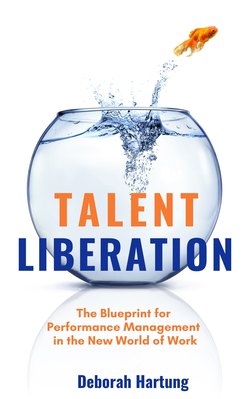Читать книгу Talent Liberation - Deborah Hartung - Страница 3
На сайте Литреса книга снята с продажи.
The origins of all that we still think and believe about work
ОглавлениеBut it's not the system or the methodologies in use in workplaces around the world as much as it is actually our underlying attitudes and beliefs about work and human motivation and productivity and profit, that is to blame for the situation we find ourselves in.
When last did you stop to think about the origins of our current performance management methodologies? Or spend time thinking about what motivates people to work or to continue to learn and grow and do more and try harder?
I will spare you the trouble of doing a ton of research or hitting those search engines in the wee hours of the morning. All you really need to do, is to think back to the early days of the First Industrial Revolution and even the couple of decades immediately preceding the introduction of the mechanised factory environment. When we were living on farms and smallholdings, our entire production capacity depended on how fast we could work and how much we could get done between sunrise and sunset. “Manpower” is literally the power or strength of one man and how that translates into his ability to achieve a task like moving an object or harvesting produce or building a structure. It refers to energy and physical ability and stamina. It implies a finite supply because of the physical limitations we humans have due to our need to rest and recuperate, as well as those early limitations due to our lack of electricity and sources of light by which to do whatever work it was we set out to do.
Once we introduced early technology into the mix, suddenly we saw this human capacity increase by factors of between 40 and 500. As our technological capacities improved, so too did our productivity - and our wealth and general prospects in life positively bloomed. We could aspire to more than living off the land. We could acquire wealth and property and prosperity. But despite these early technological advances, humans still had to physically operate most of these machines - so the faster you could operate a machine, the better for your employer. The focus was on individual ability and not necessarily on the abilities and overall efficiency and performance of the collective. It is widely believed that Robert Owen and his ‘silent monitors’ in his cotton mills in Scotland during the 1800's, introduced the foundational concepts upon which modern performance management still relies.
Let's just take a moment to contemplate the idea of a ‘silent monitor’. Imagine someone watching your every move and effectively ‘informing’ on you to your employer. Think of the impact this had on trust and cooperation in the workplace. There could be no semblance of collaboration and team work and the work environment had to be one where it was ‘every man for himself’ and it literally came down to ‘survival of the fittest’. The slightest hint of weakness in terms of fatigue, illness or injury would be reported to the powers that be and you could lose your job to one of the younger, more able-bodied men queuing outside. There was no room for compassion and empathy when chasing profits and competing with a seemingly endless supply of labour. To a large extent, I think we have carried much of this suspicion and the disdain for any sign of weakness with us for generations and straight into the 21st century workplace.
The shift towards greater operational efficiency and effectiveness only started manifesting during the 1920's and 1930's with the introduction of ‘Return on Investment’. Once business owners started really looking at the cost of production and the overall performance of their factories as a collective, the battle for power truly began. There was still no shortage of adults willing and able to work in factories for the promise of a ‘better, more prosperous future’ and success and profits meant that business owners were able to keep their production costs low. How do you think they achieved this in a time where technological advances weren't exactly exponential? How many options were really available to ‘reduce overhead spend’?
And we've seen this approach continue throughout every single decade since then. Want to save money in your business? Improve efficiency? Got to trim the fat - redundancies and layoffs are your answer!
People are afraid of losing their jobs and the economic prosperity that comes with being gainfully employed, so employers learned a long time ago that they can use that fear to keep people in line and remind them that there are thousands waiting in unemployment lines, ready to step into their jobs if they are unhappy with what is on offer.
